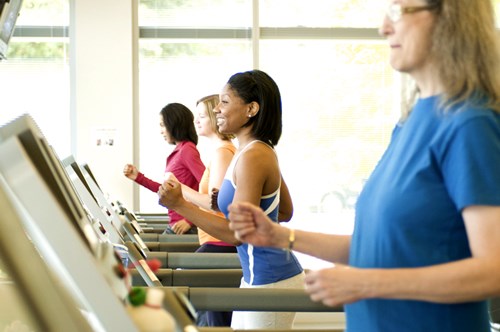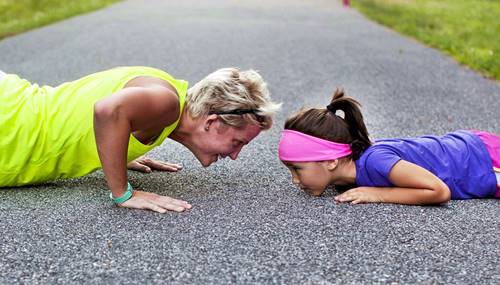Getting Fit: the Science behind Exercise
Science backed proof on the health benefits of exercise
Fact Checked
×All the content published in our website is fact checked to validate its accuracy.
Visit our guidelines web page to learn more about our strict processes regarding how we review our content's sources: reliable and reputable journals, media websites, universities, colleges, organizations, and professionals.
Our articles are based on scientific evidence, and the references are included in its footnotes, which are clickable links to sound scientific papers.
First published: 11.Nov.2018
Overview: Science shows that exercise is great for your health
Exercise not only helps you to lose weight and keep fit, but it also provides many benefits such as lower blood pressure, more muscle strength, lower risk of diabetes, dementia, and depression.
It even lengthens your life span by about 9 years!
This article looks into the science in exercise and provides proof-backed information on the health and wellness benefits of physical activity.
References and Further Reading
(1) American Heart Association News, (2015). Physical activity: More is better for heart failure prevention, October 5th, 2015
(2) Romeo B. Batacan Jr., et al., (2015). Effects of Light Intensity Activity on CVD Risk Factors: A Systematic Review of Intervention Studies, BioMed Research International Vol 2015, Article ID 596367, http://dx.doi.org/10.1155/2015/596367
(3) James H. O'Keefe et al., (2012). Potential Adverse Cardiovascular Effects From Excessive Endurance Exercise, Mayo Clin Proc. 2012 Jun; 87(6): 587-595. doi: [10.1016/j.mayocp.2012.04.005]
(4) Kirk I. Erickson et al., (2011). Exercise training increases size of hippocampus and improves memory, PNAS February 15, 2011, 108 (7) 3017-3022; https://doi.org/10.1073/pnas.1015950108
(5) James A. Blumenthal, Patrick J. Smith, and Benson M. Hoffman, (2012). Is Exercise a Viable Treatment for Depression?, ACSMs Health Fit J. 2012 July/August; 16(4): 14-21. doi: [10.1249/01.FIT.0000416000.09526.eb]
(6) Larry A.Tucker, (2017). Physical activity and telomere length in U.S. men and women: An NHANES investigation, Preventive Medicine. Vol 100, July 2017, 45-151, https://doi.org/10.1016/j.ypmed.2017.04.027
(7) Stoyan Dimitrova, Elaine Hultenga, and Suzi Honga, (2017). Inflammation and exercise: Inhibition of monocytic intracellular TNF production by acute exercise via β2-adrenergic activation, Brain, Behavior, and Immunity Vol 61, March 2017, 60-68, https://doi.org/10.1016/j.bbi.2016.12.017Get rights and content
(8) Ulf Ekelund et al., (2015). Physical activity and all-cause mortality across levels of overall and abdominal adiposity in European men and women: the European Prospective Investigation into Cancer and Nutrition Study (EPIC), The American Journal of Clinical Nutrition, Vol 101:3, 1 March 2015, 613-621, https://doi.org/10.3945/ajcn.114.100065
(9) Carole A. Paley and Mark I. Johnson, (2018). Abdominal obesity and metabolic syndrome: exercise as medicine? BMC Sports Sci Med Rehabil. 2018; 10: 7, 2018 May 4. doi: [10.1186/s13102-018-0097-1]
(10) Joseph E. Donnelly et al., (2013). Aerobic exercise alone results in clinically significant weight loss for men and women: Midwest Exercise Trial-2, Obesity (Silver Spring). 2013 Mar; 21(3): E219-E228. doi: [10.1002/oby.20145]
(11) Leslie H. Willis et al., (2012). Effects of aerobic and/or resistance training on body mass and fat mass in overweight or obese adults, J Appl Physiol (1985). 2012 Dec 15; 113(12): 1831-1837. 2012 Sep 27. doi: [10.1152/japplphysiol.01370.2011]
(12) Cheng CC, Hsu CY, Liu JF., (2018). Effects of dietary and exercise intervention on weight loss and body composition in obese postmenopausal women: a systematic review and meta-analysis, Menopause. 2018 Jul;25(7):772-782. doi: 10.1097/GME.0000000000001085
(13) Damon L. Swift, et al., (2014). The Role of Exercise and Physical Activity in Weight Loss and Maintenance, Prog Cardiovasc Dis. 2014 Jan-Feb; 56(4): 441-447. 2013 Oct 11. doi: [10.1016/j.pcad.2013.09.012]
(14) Kyle D. Flack, Kelsey Ufholz, LuAnn Johnson, John S. Fitzgerald, and James N. Roemmich, (2018). Energy compensation in response to aerobic exercise training in overweight adults, Am J Physiol Regul Integr Comp Physiol. 2018 Oct 1;315(4): R619-R626. doi: 10.1152/ajpregu.00071.2018. Epub 2018 Jun 13.
(15) Dietary Guidelines 2015-2020 - Appendix 1. Physical Activity Guidelines for Americans. Accessed 04 Oct 2023.
(16) Benito, Pedro J et al. (2020). Strength plus Endurance Training and Individualized Diet Reduce Fat Mass in Overweight Subjects: A Randomized Clinical Trial. International journal of environmental research and public health vol. 17,7 2596. 10 Apr. 2020, doi:10.3390/ijerph17072596.
(17) Karamacoska D, Butt A, Leung IHK, Childs RL, Metri NJ, Uruthiran V, Tan T, Sabag A, Steiner-Lim GZ. (2023). SBrain function effects of exercise interventions for cognitive decline: a systematic review and meta-analysis. Front Neurosci. 2023 May 16;17:1127065. doi: 10.3389/fnins.2023.1127065. PMID: 37260849
(18) Paluch, Amanda E et al., (2022). Daily steps and all-cause mortality: a meta-analysis of 15 international cohorts. The Lancet Public Health, Volume 7, Issue 3, e219 - e228. March 2022
About this Article
Getting Fit: the Science behind Exercise, A. Whittall
©2023 Fit-and-Well.com. First published: 11.Nov.2018. Updated 05.Nov.2024. Next Update scheduled for 06.Nov.2027. https://www.fit-and-well.com/fitness/exercise-science.html
Tags: exercise, metabolic syndrome, depression, inflammation, dementia, walking, longer lifespan, weight loss, belly fat





